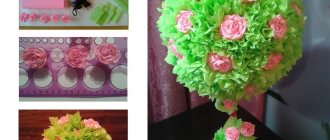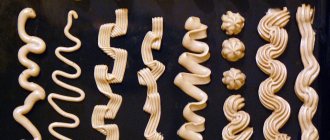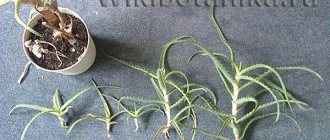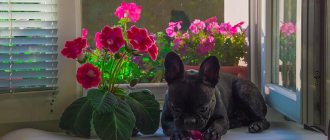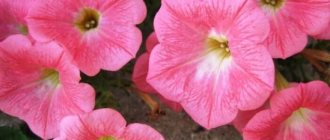Petunia takes pride of place in home gardens, thanks to its attractive appearance, long flowering, and a huge selection of varieties. Some people prefer to buy ready-made seedlings, while others grow them themselves. And even inexperienced gardeners can do this.
In central Russia, sowing petunia seeds can begin in the second half of February, especially if you have the opportunity to add additional light to the seedlings. If you are not going to use lighting and your windows face north, start sowing in late February - early March. During this period, the day is already long enough, and the seedlings will be provided with the necessary amount of light.
How to collect seeds
If you decide to collect petunia seeds, wait until they ripen on the bush. At the very beginning of flowering, mark out several lower buds on the petunia bushes of the varieties you want to sow next year, since in them the process of formation and ripening of seeds is faster. From the moment the buds form until the seeds fully ripen, about two months pass.
In the photo: Blooming variegated petunias
Petunia seeds are very small, their diameter is approximately 0.5 mm, there are about a hundred of them in a box. You can cut the seed pods and store them at home, but it is better to shake the seeds out of the pods, put them in bags and write on each of them the name of the variety and the year the seeds were collected. The seeds are ripened at room temperature for three to four months. When properly stored, petunia seeds do not lose their viability for up to four years.
- How and why to sow potato seeds for seedlings
Temperature and light conditions
Temperature conditions affect the development of seedlings. Immediately after germination, the temperature is reduced to the following values: during the day about +20 degrees, at night from +14 to +16. If the room is too hot, the petunia will begin to stretch. After a few days, the temperature can be increased by 2-3 degrees, but no more.
Petunia must be provided with at least 14-16 hours of daylight per day. In early spring, there is not enough natural light, so a phytolamp is installed on the windowsill. Turn on the lighting in the morning and evening hours so that the length of the day increases to 16 hours.
It is recommended to turn the container on different sides towards the light so that the seedlings do not stretch. This can be done every day or as needed (if the seedlings begin to lean to one side).
LiveInternetLiveInternet
Step one - picking
What is important is not the picking procedure itself, but the container in which the petunia will grow before planting in a permanent place. The most optimal volume is 0.2-0.3 liters. Less is not possible, more, up to 0.5 liters. - Can. In a small volume, petunia will not be able to grow good roots and green mass, and this will undoubtedly affect the quality of bush development and flowering.
Step two - warm-cold, day-night mode
Petunias need differences in day and night temperatures. This contributes to the formation of strong, stocky bushes and the growth of additional shoots, which will later bear buds. Of course, if seedlings grow in an apartment, these conditions are difficult to provide, but it is possible if there is a loggia. For grown petunia bushes, a night temperature of 10-16 degrees on the loggia will only be beneficial. If you use backlighting, you don’t need to shine it 24 hours a day; 16 hours is enough. By providing petunias with changes in temperature and lighting, we bring it as close as possible to natural conditions.
Step three - pinching
Contrary to popular belief among amateur gardeners, not all petunia needs to be pinched. The vast majority of hybrids have good branching even without this procedure. The photo below is an example of a petunia bush that does not need pinching; it grows in the desired shape without it:
But it also happens that petunia, as we say, “goes into the stick.” This may depend on the growing conditions (poor lighting, too warm in the room, crowded conditions) or on the variety. There are varieties that require the formation of a bush, for example: Superbissima, Avalanche, Double Cascade series of terry petunia, Dot Star - new this season, and some others. In the photo below is a petunia that has gone into the stick and needs pinching:
In any case, during the process of growing seedlings, you need to monitor the growth pattern of petunia so that, if necessary, pinching is done in a timely manner. If we ignore pinching on such bushes, we will not get any beauty and splendor.
Unfortunately, not all gardeners can provide ideal conditions for the growth and development of petunias. It is usually grown on windowsills, where, of course, conditions are far from ideal. As a result, the bushes often turn out weak and elongated, growing into one stem. This is where pruning comes in! We cut, sparingly, above the second or third pair of leaves and literally in a few days you will see new shoots emerging from the axils. And after a couple of weeks, this bush will grow with new growth, become strong and fluffy.
I am not a fan of repeatedly pinching petunias. Yes, of course, there are variety series that need to constantly form a bush, for example, the series of double petunias Double Cascade, Superbissima or Dot Star. But, again, the vast majority of hybrids do not need this! By pinching every two weeks, as some authors advise, you will, of course, get dense growth, but you risk not seeing flowering, because each pinching delays its timing.
In general, monitor the condition of your petunias, they themselves will tell you what to do: pinch, cut or leave them alone. The shoots have stretched out - we cut them, leaving 3-4 internodes from the base of the cut branch. We need to get more new growth - we pinch the ends of the shoots. I practically never pinch or trim bush petunias; in ampelous and cascading petunias, I cut off the central shoot at seedling age and usually limit myself to this. In the future, pinching or trimming only as necessary.
You can also get a lush bush and abundant flowering with the help of special preparations. I use Floron, a targeted biostimulator with amino acids. It works as an inhibitor, inhibits upward growth of vegetative mass, reduces the length of internodes, stimulates the growth of lateral shoots, provokes and enhances flowering. It belongs to the group of professional agrochemicals, so you are unlikely to find it in regular stores, but you can purchase it in online stores without any problems. It must be used strictly according to the instructions, taking into account the period of plant development and avoiding overdose.
And please remember: it all depends on the variety! No amount of repeated pinching or pruning will help to get a flowering ball from a bush petunia, which can easily be obtained from an ampelous or cascading petunia! When growing, focus on the varietal characteristics and do not torture your petunias with constant manipulations with haircuts and pinching. Everything should be in moderation!
Step four
We use the following order: roots-greens-blooms. This is the only way, otherwise the sum may change if the terms are changed. First, the seedlings must develop a good root system, then green mass, and only after that we allow it to bloom. Flowering on weak roots and on underdeveloped bushes is destructive for petunia. Therefore, we mercilessly remove the buds if the bush has not gained enough healthy green mass. Here is an example of flowering on underdeveloped bushes:
As you can see in the photo, the petunia grew in a small volume, the roots did not have enough freedom and nutrition for development, and accordingly the plant was unable to form a full-fledged bush. Development stopped there. To grow these bushes, you need to remove all the flowers and buds, trim the roots, replant a larger volume, and be sure to feed them with fertilizer with a high content of phosphorus and nitrogen.
Step five - volume of pots and flowerpots
I know that this question worries many gardeners, especially beginners. There is a lot of information on this topic on the Internet, but it is very contradictory and it is easy to get confused. But in fact, everything is not so difficult if you understand the basic points.
I don’t know where the statement came from that the volume of soil for normal development of petunia should be at least 5 liters per plant. Apparently, someone wrote it somewhere, and others picked it up. Based on my own many years of experience, I can say that the axiom of 5 liters is very, very approximate.
Why? But because the volume of soil for one petunia seedling depends on several components, and these are: variety, climatic conditions and feeding characteristics.
But first things first.
The variety of petunia is the main determining factor for the size of the planting capacity. Bush varieties are less demanding on the amount of substrate in the pot, while ampelous and cascading varieties are more finicky: in order for them to show all their capabilities, it is necessary to take care of spacious containers.
5 liters is the required minimum for SOME varieties of ampelous and cascading petunias! But, I repeat, this is the MINIMUM! For example, a series of ampelous and semi-ampeloid petunias Capella, Bonnie, Peppy, Potunia, Svetunia, Sweetsunshine can grow and bloom well all season long in a 5-liter pot without any problems. What cannot be said about other variety series: Tidal wave, surfinia, Blanket, Cascadias, Explorer, Velvet, and many others. For them, the minimum volume of soil should start at 10-15 liters.
My ampelous and cascading petunias grow in this volume.
As for bush varieties of petunias, everything is ambiguous here too. Genetically dwarf varieties such as Limbo, Espresso Grande, Duvet, Picobella, Fantasy, which are not distinguished by strong growth, can be safely planted one at a time in 2-3-liter pots, where they will feel great. For taller variety series, such as Sophistika, Prism, Supercascade, Falcon, you should choose larger pots - 4-5 liters per plant. The same volume is relevant for all varieties of terry petunia.
Bush petunia Picobella Carmine alone in a 3-liter pot
In a word, focus on the size of the above-ground part; usually it is equal to the size of the root system.
The climatic conditions in our huge country are different. For those who grow petunia in the southern regions, where hot summers last for almost six months, it is advisable to plant it in a larger pot than the stated minimum. This will protect the roots from overheating, and the soil will not dry out too quickly. In addition, the growing season is quite long, and all this time petunias need to grow and develop.
In the northern regions, in conditions of short and cool summers, on the contrary, you can give petunia a minimum volume, because The growing season is much shorter than in the south, and, accordingly, it may not have time to master too much capacity.
Features of fertilizing also play an important role in choosing a planting container. If you feed correctly, often and regularly, then even vigorous varieties in a small volume of soil can grow well throughout the season without losing their decorative properties. Of course, they will not show all their power in such conditions, but, nevertheless, they will delight you with beautiful flowering. As an example, the photo below shows Blanket Rose Star petunia.
The variety is genetically very powerful; the minimum volume of soil for it is 10 liters. This petunia grew for me all summer in a 7-liter pot, even without a rejuvenating haircut. Fertilizers: Bazacot Plus for 6 months when planting in the ground and plus weekly foliar feeding alternating: once a week Plantafol with formula 5.15.45 or Potassium Monophosphate. A week later, under the root of Kristalon flower.
Therefore, dear gardeners, if you are too lazy to feed your petunia regularly, then plant it in a larger pot. Or add a long-acting fertilizer such as Osmokot or Bazakot to the soil when planting, it will do everything for you.
There is no need to go crazy in the spring looking for huge containers to plant a couple of bush petunias; in the photo below, two Fantasy Red bush petunias feel great in a 5-liter pot.
So, as you can see, everything is very individual, and the axiom that petunias need at least 5 liters of soil per plant is nothing more than a widespread myth.
Everything comes with experience, so don’t be afraid to experiment based on your own conditions and the varieties you grow.
Remember! When planting in a permanent place, you should take into account the optimal volume of the pot: for bush petunia this is 3 liters per plant. When planting in open ground, the distance between bushes should be at least 20 cm.
Step six - removing the seed pods
I think all flower growers already know that wilted petunia flowers need to be removed along with the seed pods so that the plant does not waste energy setting seeds, but allows them to bloom.
Step seven - regular feeding
Petunia simply loves to “eat” well. If you feed her weekly during the growing season, she will certainly thank you.
When laying buds and during flowering: Spray the leaves with potassium monophosphate. Please note: we spray it, and not pour it under the root, this way the fertilizer is absorbed much better. We dilute at the rate of 1 level teaspoon per bucket of water. We carry out the procedure once every 5-7 days. At this stage, between spraying with potassium monophosphate, you can give Kristalon flower under the root.
After planting the seedlings in a permanent place, we continue feeding: once a week, be sure to use potassium monophosphate on a leaf, after a few days, Kristalon (1 tablespoon per bucket of water), Fertika or Agricola at the root. Thus, we produce 2 feedings every week.
It is advisable to fertilize petunia growing in pots with each watering, but the dosage should be reduced by at least half.
Here is a simple procedure for applying fertilizers for good growth, development and abundant flowering of petunias. It is very important to follow the sequence of feeding. In no case should you give nitrogen if the root system is undeveloped, as you can end up with vigorous growth of green mass to the detriment of root development. Such a plant will be weak and may die over time. Potassium should not be given to undeveloped plants to avoid premature flowering. This can also lead to disastrous consequences. Each fertilizer has its time!
Therefore, let's not experiment with homemade fertilizers, the chemical composition of which we do not know. After all, flowers are not vegetables, we don’t eat them, and the chemicals here are unlikely to harm anyone.
This set of measures will allow you to unleash all the capabilities of petunia and enjoy its abundant and long-lasting flowering.
Pinching
When the height of the stem is at least 8 cm and 5 true leaves begin to form, it is necessary to pinch the stem. This is done so that buds and new shoots form faster in the open ground, so that the bush turns out beautiful and lush.
Cut the shoots slightly obliquely above the fifth leaf. It is recommended to pinch in the morning so that the wound heals by evening. After 20-30 days, the side shoots will begin to stretch out - they should be pinched in the same way as the top.
Cut tops can be used to obtain planting material. The cuttings are placed in a transparent container with water and kept until roots appear. Next they are planted in the ground.
Picking seedlings
The seedlings are ready for picking when the second true leaf appears. You should not delay picking, as the root system of neighboring plants quickly intertwines. When transplanting, you will have to tear the roots - this is stressful for small plants.
The picking process consists of the following steps:
- Moisten the soil well in a common container. Watering is carried out several hours before picking.
- Prepare individual cups for planting - rinse well with water. Then treat with a disinfectant solution if the container is reused.
- Fill the cups with nutrient soil and make a small depression in the center.
- Carefully remove the plants from the common seed box using a teaspoon. Do it carefully, trying not to damage the root system.
- Deepen the seedlings into cups so that the cotyledon leaves are slightly above ground level. They cannot be buried.
- Water the seedlings generously with warm water. Leave on a well-lit windowsill. In the first days, protect the plantings from direct sunlight.
Why does petunia grow poorly in pots?
There are several reasons for the slow growth of petunia in pots. One of them is improper care. Some gardeners make mistakes: they water the flower with cold water, do not monitor the soil moisture level, and flood the plant . In this case, the roots rot, causing growth to slow down. The problem may also be caused by a lack of mineral fertilizers. For example, if you overfeed petunia with urea, the flower will spend all its energy on stems and leaves, and the buds will remain small.
Attention! A common cause of poor development is lack of sunlight and warmth. Petunia loves the sun; pots are not placed in the shade.
Diseases also negatively affect growth: blackleg, white and gray rot, powdery mildew, late blight. If signs of the disease are detected, gardeners immediately treat petunia with a solution of Topaz or Previkur. For preventive purposes, they follow the rules of planting and care, disinfect garden tools, and spray petunia with a solution of wood ash.
Slow growth can be caused by insect pests - aphids and spider mites love petunia. Because of them, the leaves and buds are deformed, the flower turns pale. For prevention, the plant is sprayed with a solution of laundry soap. Treatment: treatment with Fufafon or Tanrek.
